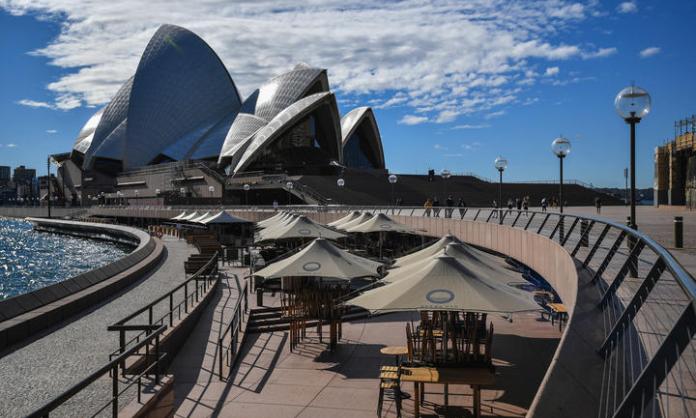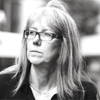“We’ve demonstrated in NSW that there’s an alternate way to heavy-handed lockdowns”, NSW Premier Gladys Berejiklian told a Liberal Party conference in May. “We made sure that we had the systems in place to be able to weather whatever came our way so that we would never go into lockdown again.” A month later, ten days into an outbreak of the highly contagious Delta strain of COVID-19 in Sydney, she finally relented.
At that point, late June, epidemiologists were already saying the lockdown had come too late. The government ignored expert advice that going hard and going early would provide the greatest public safety. Events have proved the experts right and the government wrong. Now, it looks like they have lost control. We are currently seeing the consequences of the gamble that the NSW government was prepared to take to keep business profits flowing.
Since 16 June, when the first case of the Delta strain was registered, the numbers have risen exponentially: 43 cases by 23 June, 204 by 30 June and 357 by 7 July. A further 82 have been added in the two days since. There are now 285 cases linked to the Bondi cluster. Worryingly, there are 37 cases that have not been linked to a known case or cluster, with a further 117 linked to these 37 unlinked cases. There are 43 people with COVID-19 in hospital. Ten are in intensive care, four of whom require ventilation.
Hence the transformation of Berejiklian from 8 July’s “All the experts have said if every single person does the right thing, that we can get to where we need to go at the end of the three-week period”, to 9 July’s “Unless there is a dramatic change, unless there is a dramatic turnaround in the numbers, I can’t see how we would be in a position to ease restrictions by next Friday”.
But the government’s half-hearted response so far has given the virus a head start.
The consequences are not just for individuals who contract the virus. As Australian Medical Association President Omar Khorshid pointed out on 8 July: “Around 10 percent of the cases are already in hospital. Now just multiply that out to thousands and thousands of cases, which is the inevitable outcome within a very short period of time if restrictions are eased. And just imagine what the hospital system will look like”.
On 9 July, the NSW government was forced by this dire circumstance to tighten the lockdown. New limits on individual behaviour have been introduced, such as only one person per household being allowed to leave the home for shopping, and only two (not the previous ten) being allowed to exercise together.
But the glaring omission remains the number of businesses that are able to remain open. Instead of closing all non-essential businesses, the government merely proclaimed that “browsing” is now prohibited when we are at the shops.
With a kind of gallows humour, Sydneysiders have invented a new game regarding this “mockdown” or “lockdown lite”. You can find it in the comments on the NSW Health Facebook page or on any talkback radio show. It involves coming up with the most non-essential thing that’s open. Is it the six different Bunnings, a raft of shopping centres from Maroubra to Eastern Creek, Harvey Norman, Rebel and other sportswear shops, Beds R Us, Supercheap Auto or Kathmandu (all of which have already been exposure sites)? Or is it that you can visit your second home if it is also within greater Sydney? Or that the essential Gucci and Louis Vuitton (as well as the more downmarket fashion and shoe shops) are still open?
More seriously, these locations are also workplaces where infected workers have had to turn up and unwittingly infect their colleagues (such as at construction sites in Toongabbie and Auburn, where there are now several cases). Despite government and media blaming the size of migrant families for the spread of the virus, health authorities say a number of workplace clusters have “seeded” the virus in the western Sydney area, with mingling among family members possibly contributing.
The consequences of allowing non-essential businesses to keep operating was demonstrated dramatically when the number of close contacts identified by NSW Health doubled overnight on 8 July from 7,000 to 14,000 due to a number of large venues being exposure sites. One of these was IKEA. About 2,000 close contacts are now linked to this totally unnecessary exposure.
All non-essential businesses should be closed, including non-essential retail, non-essential construction sites and other industries that, by remaining open, are forcing workers into unsafe workplaces where the virus is spreading.
While no NSW government press conference is complete without Berejiklian telling everyone that they should be taking the outbreak of COVID-19 seriously, she is the one whose refusal to take it seriously in the first place has led to this situation. The failure to enact a serious lockdown soon enough has let this outbreak grow, and means that the lockdown must be extended and strengthened. For that to mean anything, action has to be taken nationally.
As late as 8 July, Berejiklian was still saying that “NSW has kept the virus at bay for 18 months”. No, that was Victoria. The rest of the country has done the heavy lifting on eradication. The NSW government’s failure puts everyone in the country at risk. NSW is the most populous state, and it borders the two next biggest, Victoria and Queensland.
But by 9 July, only the WA Labor government and the Liberal government in South Australia had thrown up hard borders to anyone entering from NSW. The Labor premiers of Queensland and Victoria have allowed residents to return from Sydney without proper quarantine arrangements in place. With quarantine failures being the lynchpin of every outbreak since Australia’s borders were closed, that’s not good enough.
Neither is it good enough to expect workers to sustain themselves on thin air while lockdowns are in place. More than 67,000 NSW residents have already applied for the miserable federal coronavirus disaster payments of up to $500 a week. That’s nowhere near enough. Its paucity means economic necessity will drive workers to take risks. We can’t rely on Chief Medical Officer Kerry Chant’s delusion that businesses are “often very understanding” if people have symptoms and cannot go to work.
We need significant boosts in economic support for everyone in NSW. Payments need to be extended and increased to allow non-essential workers to stay at home, and they need to be available to all workers who have lost work regardless of what other leave entitlements they have, including for workers isolating after getting tested. These measures also need to be extended to all visa holders immediately.
It is an injection of cash, not an injection of police, that will help working-class and migrant communities in south-west Sydney stay safe. The “high-visibility effort involving mounted units” launched in the south-western suburbs on 9 July is a disgrace. It is hard to imagine a Sydney Morning Herald headline targeting the salubrious eastern suburbs as this did: “Police launch major operation targeting Delta spread in south-west Sydney”.
And apart from what this tells you about the intrinsic racism of the government and the police, it is also pure deflection from the government’s failures, demonising working-class people and handing out some fines in an effort to make it look like enough is being done.
On 8 July, the AMA wrote to Berejiklian, encouraging her to stay the course despite increasing pressure from business groups and others to lift restrictions. Their letter stated the bald fact: “elimination has been Australia’s secret to success with COVID ... The reality is the only solution for now is continue lockdowns until the virus is eliminated”.
There is no “living” with this deadly virus—we will be suffering and dying from it. COVID-19 has killed more than 4 million people globally. The NSW lockdown needs to be strengthened and extended until we reach zero community transmission.









